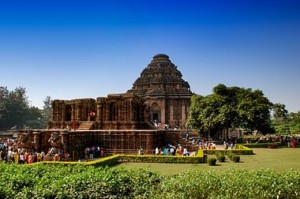By K.S.Jayaraman
Bengaluru– After an expert panel recently confirmed the existence of the mythical Saraswati river in India’s northwest, scientists at the Indian Institute of Technology-Kharagpur (IIT-KgP) now claim they have found evidence of another “lost” Indian river.
Called “Chandrabhaga”, this ancient river is believed to have existed at a distance of about two km from the 13th century Sun Temple at Konark, a Unesco World Heritage Site in the eastern state of Odisha.
No trace of any water body is at present visible in the proximity of the temple, but “the mythical river figures prominently in ancient literature”, the scientists report in the journal Current Science.

Almost all myths regarding Konark, including illustrations and photographs, indicate the presence of the Chandrabhaga river in the proximity of the temple, they say.
The IIT study aimed to verify this myth. They did this through integrated geological and geophysical exploration in conjunction with historical evidence and analysis of satellite data. Imagery from Landsat and Terra satellites of the US and those obtained by NASA Space Shuttle Endeavour’s “Radar Topographic Mission” in 2000 were used.
According to their report, the satellite imagery and Google Earth image showed a “sinusoidal” trace, characteristic of a typical “palaeo-channel” — remnant of an inactive river — passing north of the Sun Temple extending approximately parallel to the coast.
The existence of a palaeo-channel was further corroborated through profiling the surface using “ground penetrating radar” that showed the existence of a V-shaped subsurface river valley, the scientists report.
Field studies revealed that the suspected palaeo-channel is characterised by swampy lands covered with water hyacinth plants and geologically, the study area “is covered with alluvium, a deposit characteristic of rivers”.
The gravity data collected from past sources also showed a low gravity anomaly zone along the suspected palaeo-channel — an indication of the presence of low density sedimentary deposits along the depressed zone.
All the evidence, including sinusoidal pattern of the river as seen in satellite imagery; patches of water bodies at various locations along the channel and the V-shaped depression seen along the elevation profile suggesting a past river valley, “indicate the presence of a palaeo-channel near Konark”, the scientists conclude.
“Combining the myths with scientific and historical evidence, the identified palaeo-channel may be correlated to the lost river Chandrabhaga,” they say. “What caused the extinction of this river remains a subject of further investigation.”
According to the IIT team, identification of such a palaeo-channel “may lead to the delineation of pockets of freshwater zones within a dominantly saline water environment, and may even partially alleviate the drinking-water problem along the Odisha coast”.















